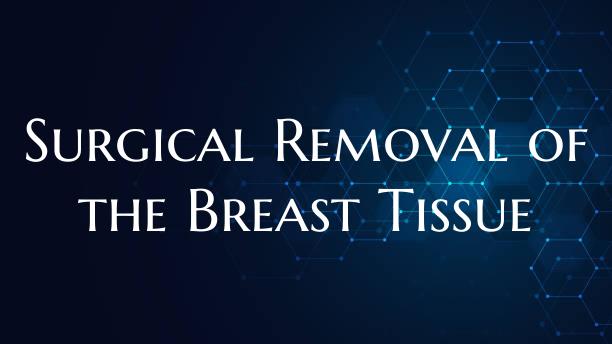
Surgical Removal of the Breast Tissue
Introduction: Surgical removal of the breast tissue, most commonly known as a mastectomy, is a significant medical procedure often performed to treat breast cancer or reduce the risk of developing breast cancer. This surgery involves the partial or complete removal of one or both breasts and can have profound physical and emotional effects on individuals undergoing the procedure. Understanding the different types of mastectomies, the reasons for undergoing this surgery, and the recovery process can help individuals make informed decisions about their treatment options.
Types of Mastectomies: There are several types of mastectomies, including: 1. Total (simple) mastectomy: Removal of the entire breast tissue, but not the lymph nodes or muscle tissue. 2. Partial (segmental) mastectomy: Removal of the tumor and a portion of surrounding healthy tissue, preserving more of the breast. 3. Radical mastectomy: Removal of the entire breast, lymph nodes, and chest wall muscles, rarely performed today. 4. Double (bilateral) mastectomy: Removal of both breasts, often done to prevent cancer recurrence in high-risk individuals.
Reasons for Mastectomy: Mastectomy may be recommended for various reasons, such as: 1. Breast cancer treatment: To remove cancerous tissue and prevent the spread of cancer to other parts of the body. 2. Risk reduction: For individuals with a strong family history of breast cancer or genetic mutations like BRCA1 or BRCA2. 3. Inflammatory breast cancer: A rare and aggressive form of breast cancer that may require mastectomy as part of treatment.
Recovery Process: Recovery following a mastectomy can vary depending on the type of surgery and individual healing abilities. Some common aspects of the recovery process include: 1. Pain management: Medications may be prescribed to alleviate pain and discomfort. 2. Physical therapy: Exercises to restore range of motion and strength in the affected arm and shoulder. 3. Emotional support: Counseling or support groups can help individuals cope with body image changes and emotional issues.
Conclusion: Surgical removal of the breast tissue through mastectomy is a complex procedure with significant physical and emotional implications. It is important for individuals undergoing this surgery to be well-informed about the different types of mastectomies, reasons for the surgery, and the recovery process. Consulting with healthcare providers, seeking emotional support, and engaging in self-care practices can help individuals navigate the challenges associated with mastectomy and move towards recovery and healing.